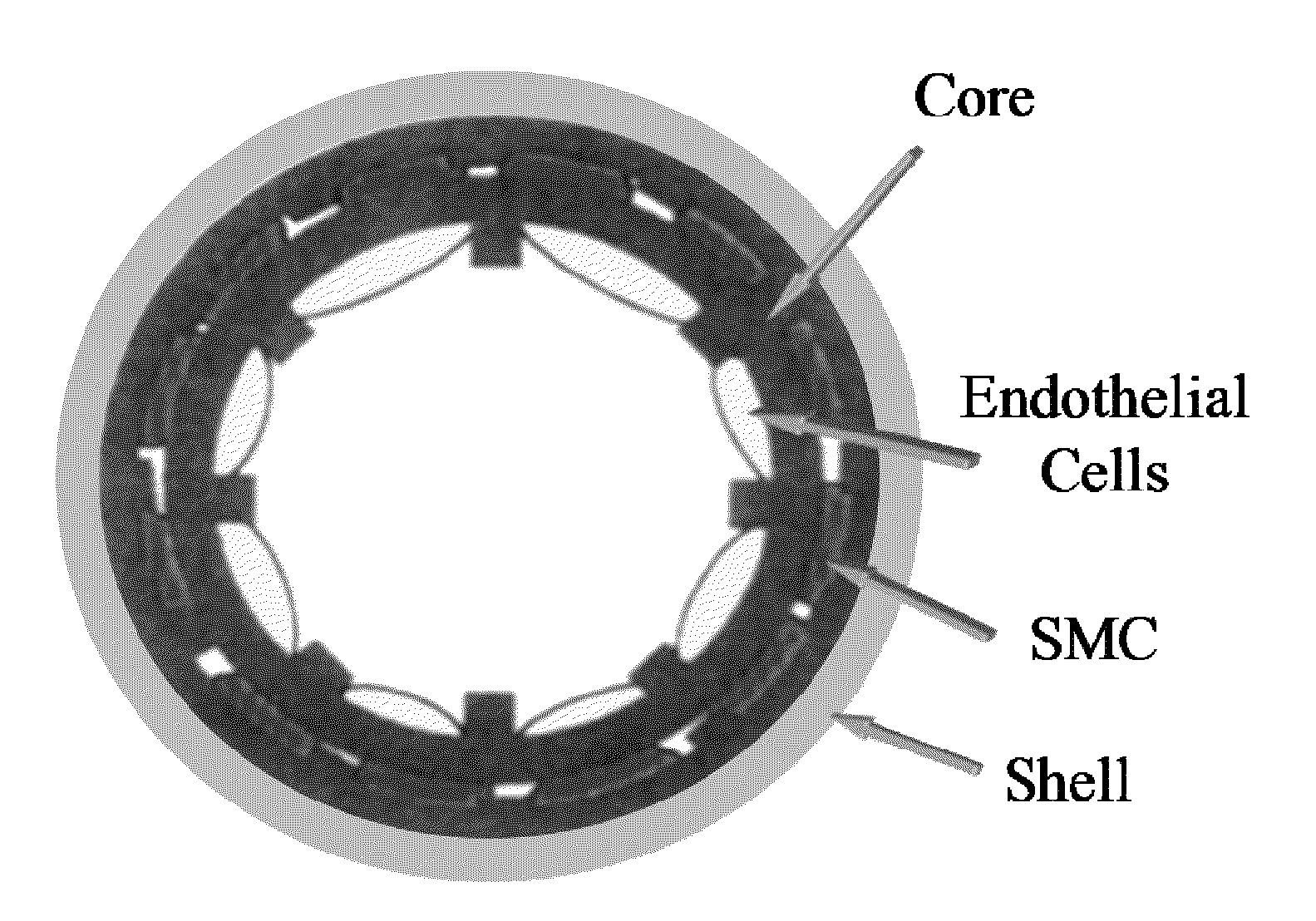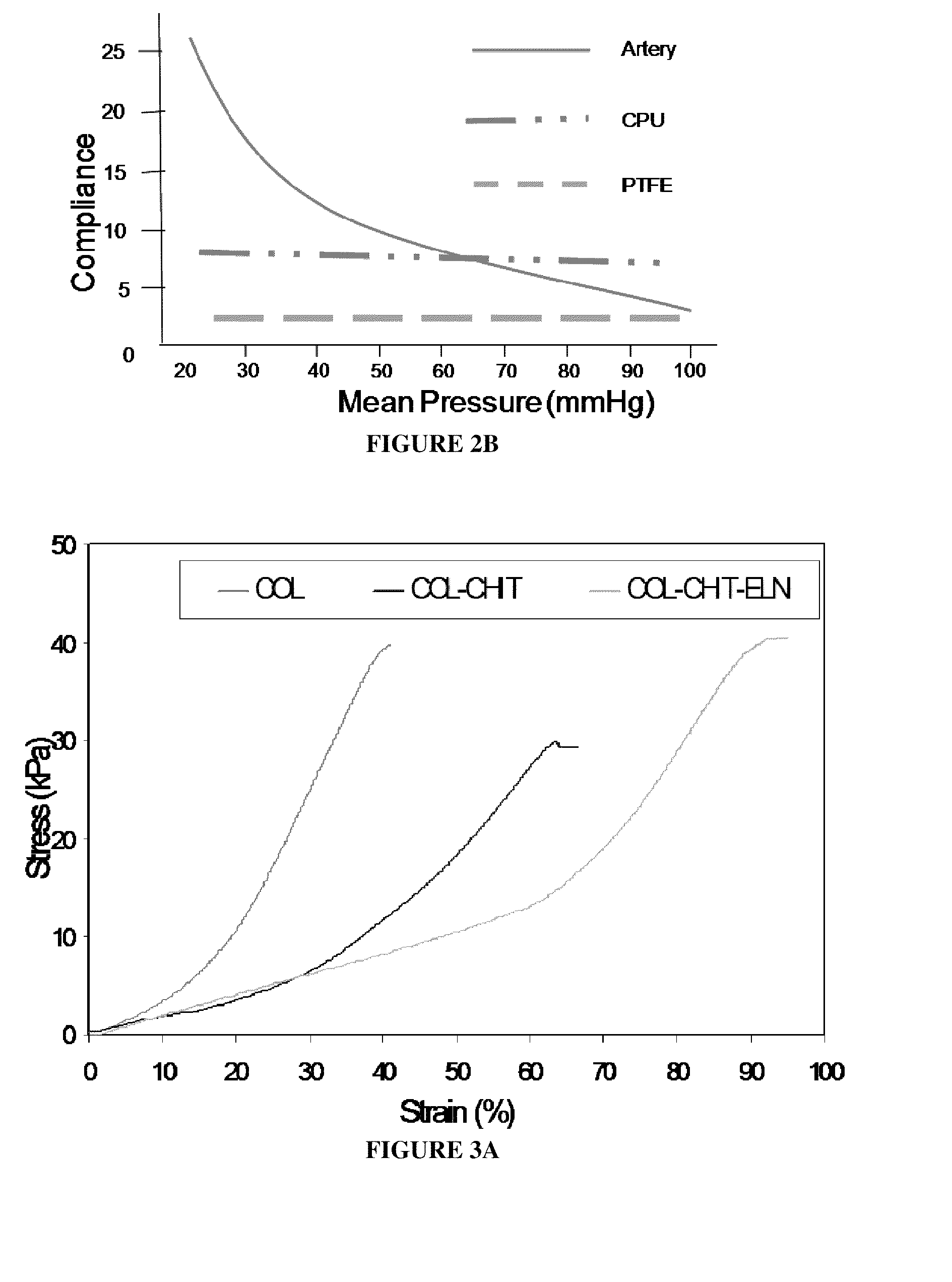Bionanocomposite Materials and Methods For Producing and Using the Same
a bionanocomposite and material technology, applied in the field of bionanocomposite materials, can solve the problems of morbidity and hospitalization, high long-term failure rate, and cost more than billions of dollars
- Summary
- Abstract
- Description
- Claims
- Application Information
AI Technical Summary
Benefits of technology
Problems solved by technology
Method used
Image
Examples
examples
[0074]The present inventor has developed a set of bioengineering techniques, including electrospinning (typically double-electrospinning) synthesis techniques for degradable biohybrid nanofiber composites with 3-dimensional signal gradients, tissue engineering techniques for vascular media-equivalent scaffolds that are mechanically strong and biological functional, as well as advanced imaging techniques for non-invasively monitoring the dynamics and interactions of cell, molecule and matrix in engineered tissues. In addition, methods have been developed for investigating molecular and cellular mechanisms underlying inflammatory response by vascular endothelium under biomimetic pulsatile flow conditions as well as mechanisms underlying the interactions between vascular endothelium and vascular smooth muscle. A porcine model has been developed to study pathology of ePTFE A / V grafts, including assessing neointimal hyperplasia, thrombosis, short-term and long-term biological evaluation ...
PUM
| Property | Measurement | Unit |
|---|---|---|
| diameter | aaaaa | aaaaa |
| inner diameter | aaaaa | aaaaa |
| inner diameter | aaaaa | aaaaa |
Abstract
Description
Claims
Application Information
 Login to View More
Login to View More - R&D
- Intellectual Property
- Life Sciences
- Materials
- Tech Scout
- Unparalleled Data Quality
- Higher Quality Content
- 60% Fewer Hallucinations
Browse by: Latest US Patents, China's latest patents, Technical Efficacy Thesaurus, Application Domain, Technology Topic, Popular Technical Reports.
© 2025 PatSnap. All rights reserved.Legal|Privacy policy|Modern Slavery Act Transparency Statement|Sitemap|About US| Contact US: help@patsnap.com



